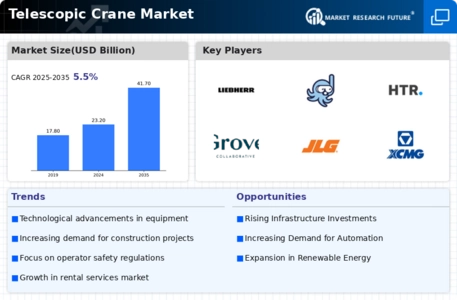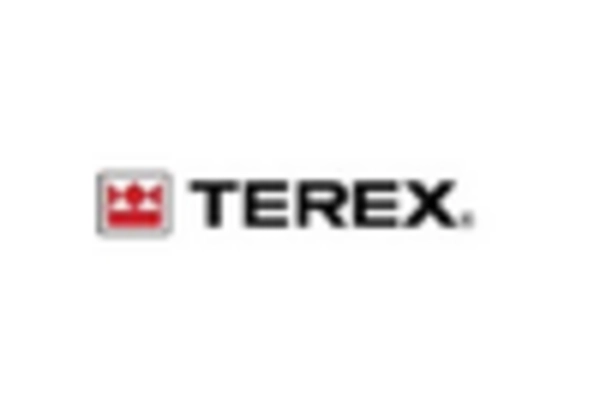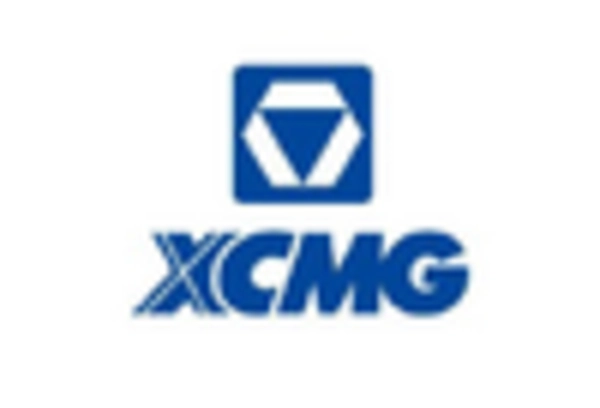Sustainability Initiatives in Telescopic Crane Market
Sustainability initiatives are gaining traction within the Telescopic Crane Market, driven by increasing regulatory pressures and a growing emphasis on environmental responsibility. Manufacturers are focusing on producing cranes that utilize eco-friendly materials and energy-efficient technologies. This shift not only aligns with global sustainability goals but also appeals to a more environmentally conscious customer base. The market for electric and hybrid cranes is expected to expand significantly, with projections suggesting a growth rate of around 20% in the next few years. Such initiatives may enhance the competitive edge of companies within the Telescopic Crane Market, as they adapt to changing consumer preferences and regulatory frameworks.
Technological Advancements in Telescopic Crane Market
The Telescopic Crane Market is experiencing a notable transformation due to rapid technological advancements. Innovations such as telematics, which enable real-time monitoring of crane performance, are becoming increasingly prevalent. These technologies enhance operational efficiency and safety, thereby attracting more investments. Furthermore, the integration of automation and smart technologies is likely to streamline operations, reduce labor costs, and improve precision in lifting operations. According to recent data, the adoption of advanced features in cranes is projected to increase by approximately 15% over the next five years. This trend indicates a shift towards more sophisticated machinery, which could redefine operational standards in the Telescopic Crane Market.
Increased Safety Regulations in Telescopic Crane Market
Increased safety regulations are shaping the landscape of the Telescopic Crane Market. As safety standards become more stringent, manufacturers are compelled to innovate and enhance the safety features of their cranes. This includes the integration of advanced safety systems, such as load monitoring and automatic shut-off mechanisms, which are designed to prevent accidents and ensure operator safety. The market is likely to see a rise in demand for cranes that comply with these enhanced safety regulations, as companies prioritize worker safety and regulatory compliance. It is estimated that adherence to safety standards could drive a 12% increase in the adoption of advanced safety features within the Telescopic Crane Market over the next few years.
Infrastructure Development Initiatives in Telescopic Crane Market
Infrastructure development initiatives are significantly influencing the Telescopic Crane Market. Governments and private entities are investing heavily in infrastructure projects, including roads, bridges, and airports, which require advanced lifting equipment. The emphasis on modernizing infrastructure is likely to create a surge in demand for telescopic cranes, as they are essential for handling heavy materials and equipment. Recent reports indicate that infrastructure spending is projected to increase by approximately 10% annually, which could lead to a substantial uptick in the Telescopic Crane Market. This trend underscores the potential for growth as stakeholders seek reliable and efficient lifting solutions for large-scale projects.
Rising Demand in Construction Sector within Telescopic Crane Market
The construction sector is a primary driver of growth in the Telescopic Crane Market. As urbanization accelerates, the demand for efficient lifting solutions in construction projects is on the rise. The increasing complexity of construction projects necessitates the use of versatile and high-capacity cranes, which telescopic cranes provide. Recent statistics indicate that the construction industry is expected to grow at a compound annual growth rate of 5% over the next five years, further fueling the demand for telescopic cranes. This trend suggests that companies operating within the Telescopic Crane Market may experience heightened opportunities as they cater to the evolving needs of the construction sector.


















Leave a Comment